Car Wrap vs Paint (7 Questions to Consider)
Let’s face it. Everyone likes their vehicle to look nice beyond comparison, catching the eye of those that pass by. This is the exact reason the auto body and detailing industry has, and always will be a booming sector of the automotive market.
Two popular options for revitalizing your car’s exterior are painting and wrapping. Here are seven key factors to consider when you need to choose between car wrap vs paint.
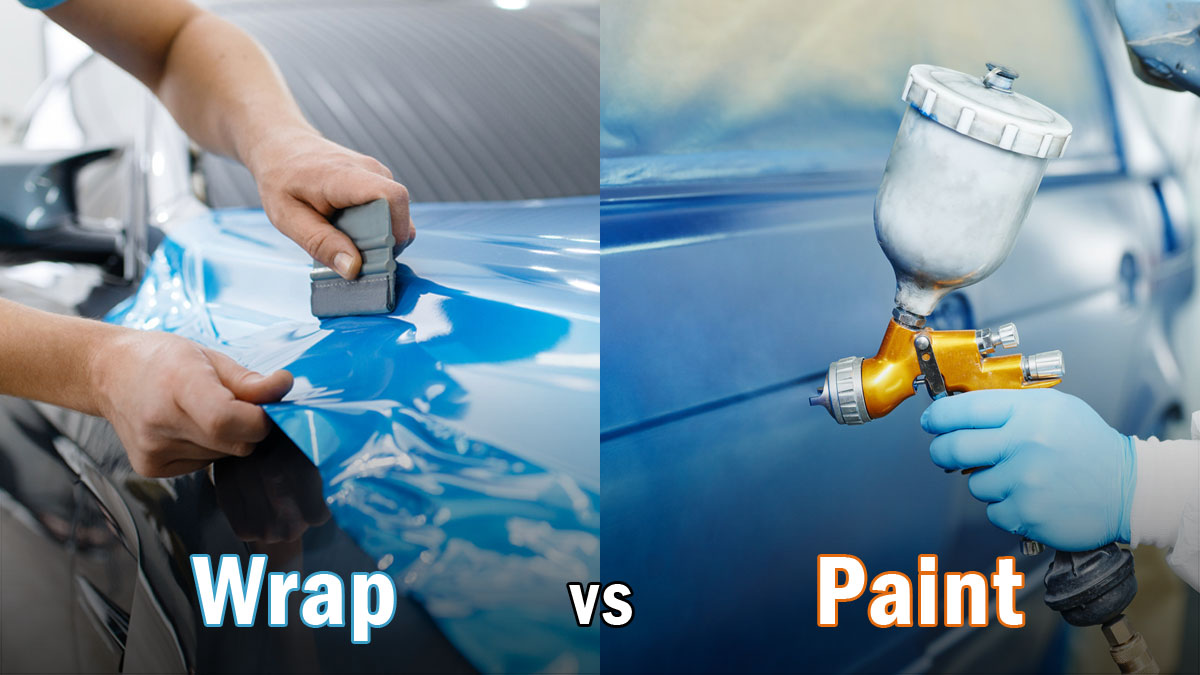
See Also: Sunroof vs Moonroof (What’s the Difference?)
Wrap It or Repaint It? (How to Decide)
#1 – How Much Will It Cost?
Much like painting a vehicle, the costs associated with applying an automotive wrap can vary greatly. Wraps themselves come in all forms and can be as intricate or mundane as one could imagine. This being said, the more intricate and all-encompassing an automotive wrap, the more costly its application will be.
In any event, one can expect to spend somewhere in the neighborhood of $750-$3,500 just to purchase the materials required to wrap their vehicle.
If one intends to apply the wrap in question themselves (it’s much more difficult than you think), this is where costs end. This is somewhat similar in cost to that which one would expect to pay to purchase the necessary supplies to paint their vehicle.
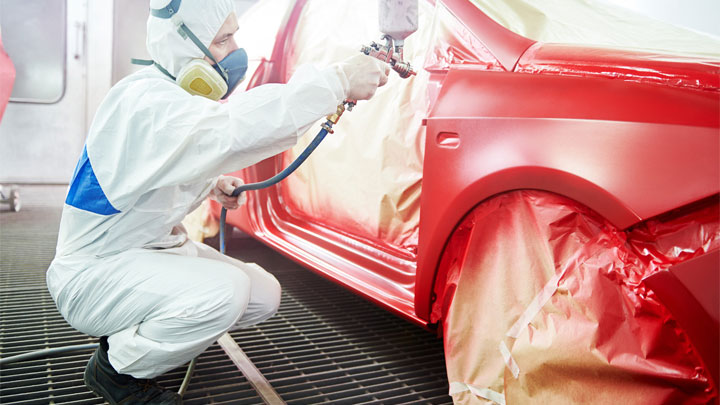
Additional cost is accrued when having an automotive wrap applied by a professional. Such services often cost in the range of $1,000-$2,000. This brings the average grand total for automotive wrapping to $2,000-$5,500. However, some extremely intricate wrap jobs can cost significantly more.
Having your vehicle professionally prepped and repainted is on average going to cost you more if you’d like a quality end result. Expect to pay at least $3,000-$7,000 in most cases and that number can easily top $10,000 for top notch work.
Based on these figures, the average automotive wrap costs approximately 1/3 less than a full vehicle repaint.
Related: Average Cost to Powder Coat Wheels
#2 – How Long Will It Take? (Prep and Paint/Wrap)

In many cases, painting a vehicle takes more time than applying a full-vehicle wrap. This is due to the fact that multiple coats of paint are often required to achieve the desired finish.
In addition, sufficient paint coat and clear coat drying times must be factored into the equation. This process can easily consume several days, under certain circumstances.
On the other hand, a wrap can be applied in a single day, assuming that the painted surfaces onto which the wrap is to adhere, are in reasonable shape. Additional time might be required for extra surface prep, in the event that a car’s exterior surfaces are dirty, oily, or otherwise in less than adequate shape to achieve maximum adhesion.
#3 – How Durable Will It Be?
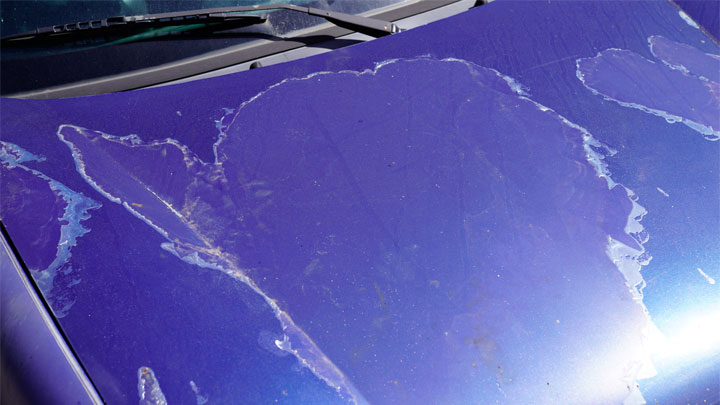
Generally speaking, most automotive wraps last for approximately 3-7 years, with a 5-year in-service life being relatively standard. While a wrap will stay adhered for longer than this amount of time, it will often begin to dry, crack, and peel in response to the elements. At this point, a vehicle’s base paint will begin to show through.
By comparison, a quality paint job often lasts up to a decade (or more), before obvious flaws in the outlying clear coat become evident. However, painted automotive exteriors are subject to occasional chipping and unsightly scratches, thereby limiting their longevity under less than ideal circumstances.
Related: How Long Does Paint Protection Film Last?
#4 – What Will Maintenance Be?
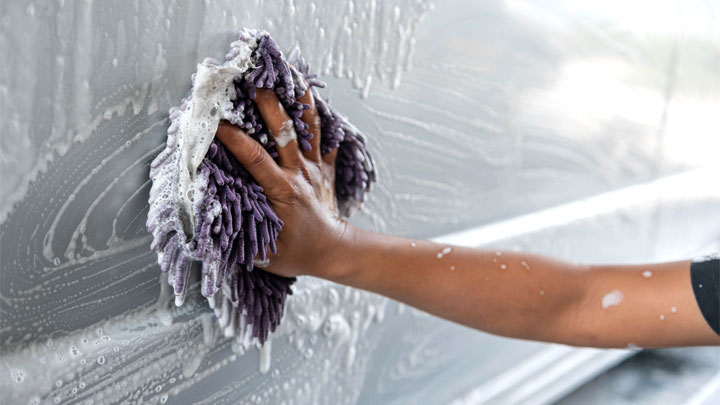
Both painted and wrapped vehicles require a certain degree of cleaning and maintenance to retain the best possible look. That being said, there are a few additional considerations that one should factor in when attempting to maintain a wrapped vehicle’s appearance, most of which do not apply to painted vehicles.
Care should be taken to avoid the use of concentrated water pressure, aggressive chemicals, or excessive heat when washing a wrapped vehicle. Any of these abuses can serve as a catalyst for wrap peeling and degradation. Additionally, care should be taken when choosing to take a wrapped vehicle through a car wash.
Whenever possible, hand washing or touchless washes are best when it comes to wraps. But in all honesty, the same applies to cars that have been painted.
Surprisingly, it is possible to use a buffer on a wrapped, but it’s extremely important to use a wrap-safe compound and to apply it correctly.
While the chore of washing a painted vehicle should also be approached with a certain degree of caution, painted automotive surfaces are often shrouded in clear coats, thereby making them somewhat less temperamental. On the other hand, wrapped vehicles do not feature any type of exterior protective coat and there’s no consensus as to whether or not a vinyl wrap can be waxed.
See Also: How to Get Paint Off a Car
#5 – How Customizable Is It?
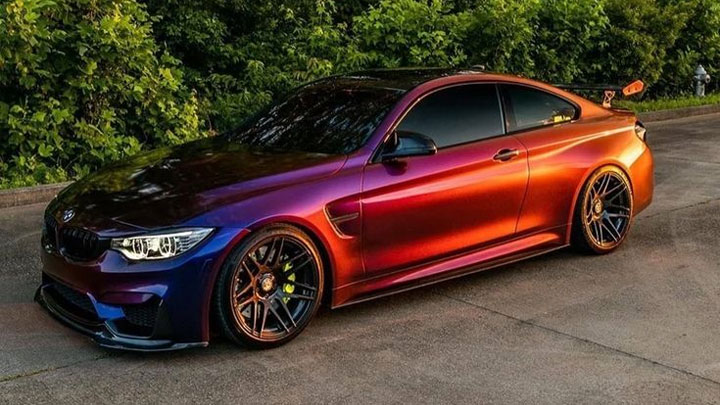
For those looking to customize their vehicle’s overall appearance, a wrap is hard to beat, especially if you are considering further cosmetic modifications in the future.
A vehicle can be wrapped on a panel-by-panel basis, allowing a two-tone appearance to be easily achieved without additional work. Achieving the same outcome with paint would require each body panel to be removed, and painted separately.
The application of a wrap also allows car enthusiasts to express their individuality by choosing to include certain graphics if they so choose. This would be far less achievable, especially on a budget, if working exclusively with paint as your medium of choice.
One can even wrap their vehicle with their company’s logo if they were to be inclined to do so.
#6 – How Will It Affect Resale Value?
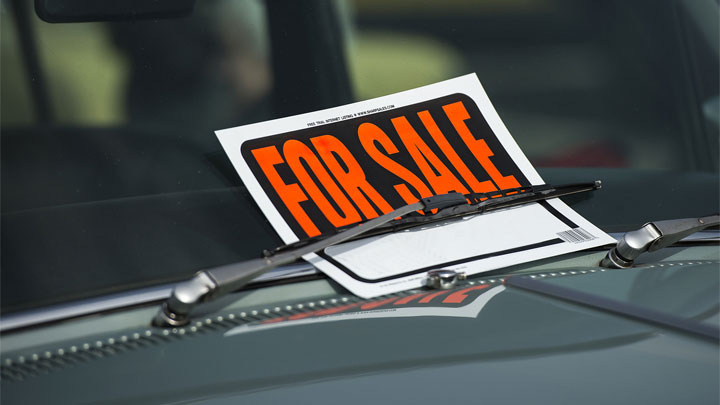
In most cases, a vehicle’s resale value is not affected by the application of a wrap. This is due primarily to the fact that a vehicle’s stock paint remains intact beneath a previously applied wrap, even serving as a layer of protection of sorts.
One can simply remove a wrap if one chooses to, returning the vehicle’s exterior to a more stock configuration. However, it’s possible to limit potential buyers if they dislike the wrap and aren’t aware the wrap can be removed.
At the other end of the spectrum, is the effect that painting has on a vehicle’s resale value. These effects are highly variable and largely depend upon the quality of the paint job itself, as well as the desirability of the color in which the vehicle has been painted.
Assuming that a vehicle has been painted a universally tasteful color that has been applied skillfully, then little to no effect on resale value should be observed.
#7 – What If I Don’t Like the Results?

In most cases, an automotive wrap can be removed relatively easily, without the need for extensive specialty equipment. Most of the time, all that is needed is a heat gun, and a plastic paint safe scraper, though additional tools can also be used if one desires.
Once the base adhesive has been heated and loosened, the peeling and removal process can begin. This is generally straightforward, assuming that a quality wrap was used in the first place.
This directly contrasts with the removal of previously applied paint, which must be sanded or chemically peeled, before a new paint application can be made. This, in itself, is a pretty major undertaking and comes with extensive cost. Therefore, it’s important to be certain of your choice of color, before having your vehicle painted.
What Is a Car Wrap?
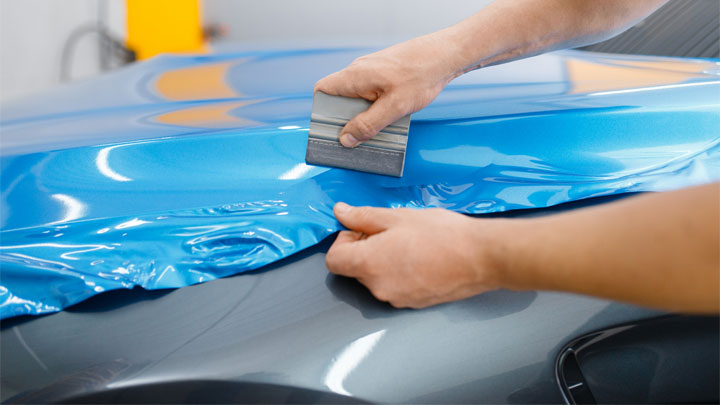
For some, the idea of wrapping a vehicle can seem rather foreign. However, clarity can be brought to such situations with a little basic understanding.
The process of wrapping a vehicle involves fully overlaying each of a car, truck, or SUV’s body panels with specialized vinyl sheets. These sheets are applied in a way that completely conceals a vehicle’s original paint, and establishes an entirely new look.
Wraps of nearly every imaginable type and configuration are available. These specialty wraps can be applied in an endless number of colors, both matte and gloss. Additionally, wraps can be arranged in a custom fashion, utilizing contrasting colors to establish a two-tone appearance, if a motorist chooses.
Automotive wraps are generally applied by professionals, who meticulously eliminate any air pockets or surface defects to achieve a seamless finish. When applied in this manner, many wraps are hard to distinguish from high-end automotive paint jobs, even though no permanent modifications have been made.
When Is Wrapping the Better Option?
Wrapping a vehicle is often the best choice for those who are trying to save money where possible, or who do not wish to commit to a certain paint color or aesthetic layout for an extended period of time. Simply put, if you are not certain that you will be happy with your choice of exterior color for a period of at least 10 years, a wrap is likely the better investment.
A wrap is also likely to be preferred by those who wish to adapt certain graphics or panel-specific color schemes into their vehicle’s external facade. These effects are generally easier to achieve with a wrap and can be applied at a more reasonable price, saving time, effort, and money.
When Is Re-Painting the Better Option?
Painting is typically the better approach for car owners who are certain in their choice of color for their vehicle, and have no intent on selling or further modifying their vehicle in the near future. Though this route is typically more expensive, it is also regarded as being more permanent, and easy to maintain in the long run, thereby exhibiting a certain degree of merit.
A painted finish might also be preferable when someone has little in the way of additional time to carefully treat and clean a wrapped surface. This is often the case with busy individuals who would simply prefer to take their vehicle through a car wash, rather than spending their Saturday afternoon carefully washing and detailing their vehicle.
- 5 Symptoms of an EVAP Leak (and Repair Cost) - Apr 27, 2024
- P0480 Code (Symptoms, Causes, and How to Fix) - Apr 19, 2024
- Car Temperature Gauge Stopped Working? (Here’s Why) - Apr 15, 2024
